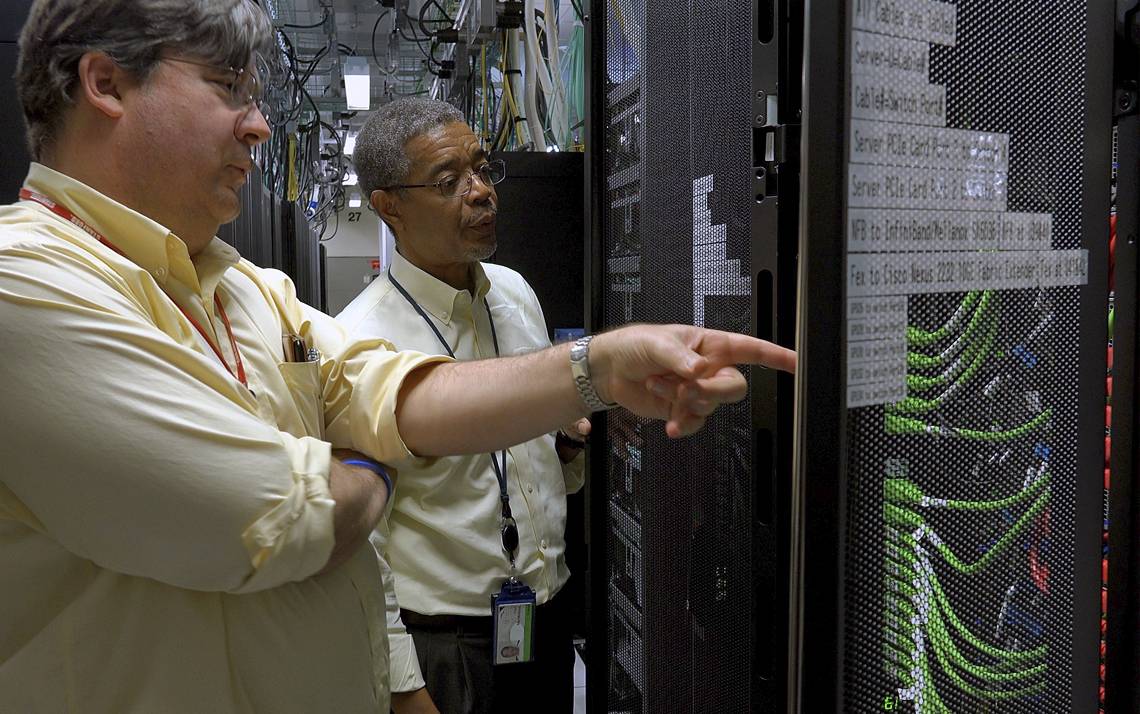It's a Virtual World
Duke’s transition to virtual computing adds efficiency and speed

Like most Duke students, senior Lucy Zhang woke up at 6:50 a.m. to register for Spring semester classes on DukeHub.
When the registration window for students opened at 7 a.m., she wanted to be ready for a process that would take 15 seconds.
“We click to enroll all at once and hope we get in the classes we want,” Zhang said.
The simultaneous clicking and enrollment of more than 1,250 seniors requires massive computing power to process requests quickly. Luckily, Duke is able to scale-up computing power five times its normal level during the peak registration window and scale back down through virtual computing for the rest of the school year.
You are probably not aware of it, but you are using virtual machines – also known as VMs – every day. Virtual machines emulate a standardized computer, making it easier to move compute jobs between the whirring metal boxes in large computer server rooms and the cloud. Virtual Machines can run lots of software and applications and offer terabytes (one trillion bytes) of storage without the cost and maintenance of hardware.
Groups of virtual machines form a “cloud” that can be used to host software and services like DukeHub, the student information system, and the Duke@Work, employee self-service portal. Consumers use clouds for everything from email and photo storage to websites. You’re actually using one right now by reading these words. At Duke, which has led the way in virtualization in higher education, more than 95 percent of services are hosted on virtual machines.
Charles Kneifel, senior technical director for the Office of Information Technology (OIT), explains how virtual computing has transformed computing at Duke.
What is virtualization?
Everybody has familiarity today with virtualization because everybody has heard of cloud computing. At the end of the day, cloud computing is you tapping into another computer, virtually. It’s not tied to the physical hardware.
How is virtualization different from computing in years past?
Ten years ago, if you wanted to run a website, you would have a physical server, and you would have the web servers running on it. If that server needed to have maintenance performed on it, you had to take the systems down. Virtual machines don’t require that.
What are the benefits of virtual computing to Duke and its users?
In computing, if hardware fails, systems at Duke go down. With virtualization, we can protect our systems from a single piece of hardware failure. The other main benefits are utilization, utilization, utilization. We can create more computing services, more efficiently. Finally, virtual labs are replacing the need for dedicated, monolithic, physical computer labs by providing the same services to students from any location, using any computer or laptop.
What systems at Duke are virtualized?
All of the departmental web servers that you typically see on campus, all of the Duke web services that you have access to such as Sites@Duke Wordpress accounts, all of the systems that run student registration and all of the course catalogs, and the Human Resource systems used by employees at Duke@Work are virtualized.
How does Duke compare to other universities with virtualization?
Duke has been at the forefront of virtualization for a number of years. So now faculty, or students or staff can go grab a virtual machine within minutes and start using it to run software and applications quickly. It’s like having a second more powerful virtual computer at your fingertips that you control through your desktop. Students often use these virtual machines for software or app development.
In this era of cybersecurity attacks, how is virtual computing secure?
Security requirements and precautions for virtual machines are the same for physical computers. There are many steps including updating software regularly, scanning the systems for vulnerabilities, encrypting communications to the servers and keeping good backups in the event of an outage. What makes cloud and our virtualized infrastructure more appealing than traditional servers, is that we have orchestrated the security measures mentioned, and our systems are much stronger from a security perspective.
What’s next for virtual computing at Duke?
The next phase is about orchestration of virtual machine creation to serve Duke’s needs flexibly. In the past, the physical servers used up energy and space even when not fully utilized. Virtual machines are “right fit,” meaning we create and use virtual computing only as we need it. It makes computing at Duke very efficient and flexible.